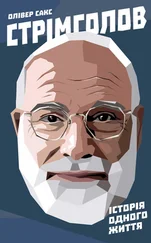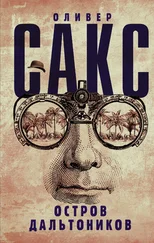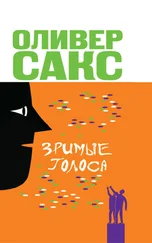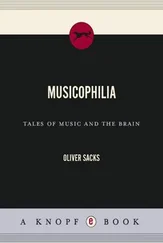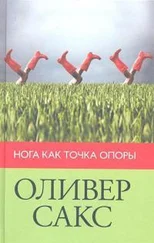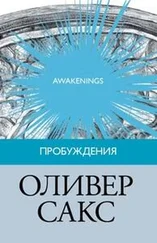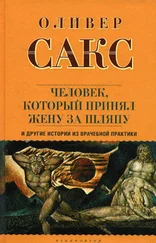I loved to read of the elements and their discovery – not just the chemical, but the human aspects of this enterprise, and all this, and more, I learned from a delightful book published just before the war by Mary Elvira Weeks, The Discovery of the Elements . Here I got a vivid idea of the lives of many chemists, the great variety, and sometimes vagaries, of character they showed. And here I found quotations from the early chemists’ letters, which portrayed their excitements and despairs as they fumbled and groped their way to their discoveries, losing the track now and again, getting caught in blind alleys, though ultimately reaching the goals they sought.
My history and geography as a boy, the history and geography that moved me, was based more on chemistry than on wars or world events. I followed the fortunes of the early chemists more closely than the fortunes of the contending forces in the war (perhaps, indeed, they helped insulate me from the frightening realities around me). I longed to go to ‘ultima Thule’, the far-northern home of the element thulium, and to visit the little village of Ytterby in Sweden, which had given its name to no fewer than four elements (ytterbium, terbium, erbium, yttrium). I longed to go to Greenland, where, I imagined, there were whole mountain ranges, transparent, scarcely visible, of ghostly cryolite. I longed to go to Strontian, in Scotland, to see the little village that had given strontium its name. The whole of Britain, for me, could be seen in terms of its many lead minerals – there was matlockite, named for Matlock in Derbyshire; leadhillite, named after the Leadhills in Lanarkshire; lanarkite, also from Lanarkshire; and the beautiful lead sulphate, anglesite, from Anglesey in Wales. (There was also the town of Lead in South Dakota – a town, I liked to imagine, actually built of metallic lead.) The geographic names of elements and minerals stood out for me like lights over the map of the world.
* * *
Seeing the minerals in the museum incited me to get little bags of ‘mixed minerals’ from a local shop for a few pennies; these would contain little pieces of pyrites, galena, fluorite, cuprite, hematite, gypsum, siderite, malachite, and different forms of quartz, to which Uncle Dave might contribute rarer things, like tiny fragments of scheelite which had broken off his larger piece. Most of my mineral specimens were rather battered, often tiny ones that a real collector would sniff at, but they gave me a feeling of having a sample of nature for myself.
It was from looking at minerals in the Geological Museum and studying their chemical formulas that I learned about their composition. Some were simple and invariable in composition – this was true of cinnabar, a mercury sulphide that always contained the same proportion of mercury and sulphur, no matter where a particular specimen was found. But it was different with many other minerals, including Uncle Dave’s favorite scheelite. While scheelite was ideally pure calcium tungstate, some specimens contained a certain amount of calcium molybdate as well. Pure calcium molybdate, conversely, occurred naturally as the mineral powellite, but some specimens of powellite also contained small amounts of calcium tungstate. One might, in fact, have any intermediate between the two, from a mineral that was 99 percent tungstate and 1 percent molybdate to one that was 99 percent molybdate and 1 percent tungstate. This was because tungsten and molybdenum had atoms, ions, of similar size, so that an ion of one element could replace the other within the mineral’s crystal lattice. But above all, it was because tungsten and molybdenum belonged to the same chemical group or family, and nature treated them, with their similar chemical and physical properties, very much alike. Thus both tungsten and molybdenum tended to form similar compounds with other elements, and both tended to occur naturally as acidic salts that crystallized from solution under similar conditions.
These two elements formed a natural pair, were chemical brothers. This fraternal relationship was even closer with the elements niobium and tantalum, which usually occurred together in the same minerals. And the fraternity approached identical twinship in the elements zirconium and hafnium, which not only invariably occurred together in the same minerals, but were so similar chemically that it took a century to distinguish them – Nature herself could hardly do so.
Wandering through the Geological Museum, I also got a sense of the enormous range, the thousands of different minerals in the earth’s crust, and of the relative abundances of the elements that made them up. Oxygen and silicon were overwhelmingly common – there were more silicate minerals than any others, to say nothing of all the world’s sands. And with the standard rocks of the world – the chalks and feldspars, granites and dolomites – one could see that magnesium, aluminium, calcium, sodium, and potassium must make up nine-tenths or more of the earth’s crust. Iron, too, was common; there seemed to be whole areas of Australia as iron-red as Mars. And I could add little fragments of all these elements, in the form of minerals, to my own collection.
The eighteenth century, Uncle told me, had been a grand time for the discovery and isolation of new metals (not only tungsten, but a dozen others, too), and the greatest challenge to eighteenth-century chemists was how to separate these new metals from their ores. This is how chemistry, real chemistry, got on its feet, investigating countless different minerals, analyzing them, breaking them down, to see what they contained. Real chemical analysis – seeing what minerals would react with, or how they behaved when heated or dissolved – of course required a laboratory, but there were elementary observations one could do almost anywhere. One could weigh a mineral in one’s hand, estimate its density, observe its luster, the color of its streak on a porcelain plate. Hardness varied hugely, and one could easily get a rough approximation – talc and gypsum one could scratch with a fingernail; calcite with a coin; fluorite and apatite with a steel knife; and orthoclase with a steel file. Quartz would scratch glass, and corundum would scratch anything but diamond.
A classical way of determining the relative density or specific gravity of a specimen was to weigh a fragment of mineral twice, in air and in water, to give the ratio of its density to that of water. Another, simpler way, and one which gave me a peculiar pleasure, was to examine the buoyancy of different minerals in liquids of different specific gravity – ’heavy’ liquids had to be used here, for all minerals, except ice, were denser than water. I got a series of heavy liquids: first bromoform, which was almost three times as dense as water, then methylene iodide, which was even denser, and then a saturated solution of two thallium salts called Clerici solution. This had a specific gravity of well over four, and even though it looked like ordinary water, many minerals and even some metals would easily float in it. I loved taking my little bottle of Clerici solution to school, asking people to hold it, and seeing their look of surprise as they experienced its weight, almost five times what they might have expected.
I was on the shy side at school (one school report called me ‘diffident’) and Braefield had added a special timidity, but when I had a natural wonder – whether it was shrapnel from a bomb; or a piece of bismuth with its terraces of prisms resembling a miniature Aztec village; or my little bottle of arm-droppingly dense, sensorily stunning, Clerici solution; or gallium, which melted in the hand (I later got a mold, and made a teaspoon of gallium, which would shrink and melt as one stirred the tea with it) – I lost all my diffidence, and freely approached others, all my fear forgotten.
Читать дальше

